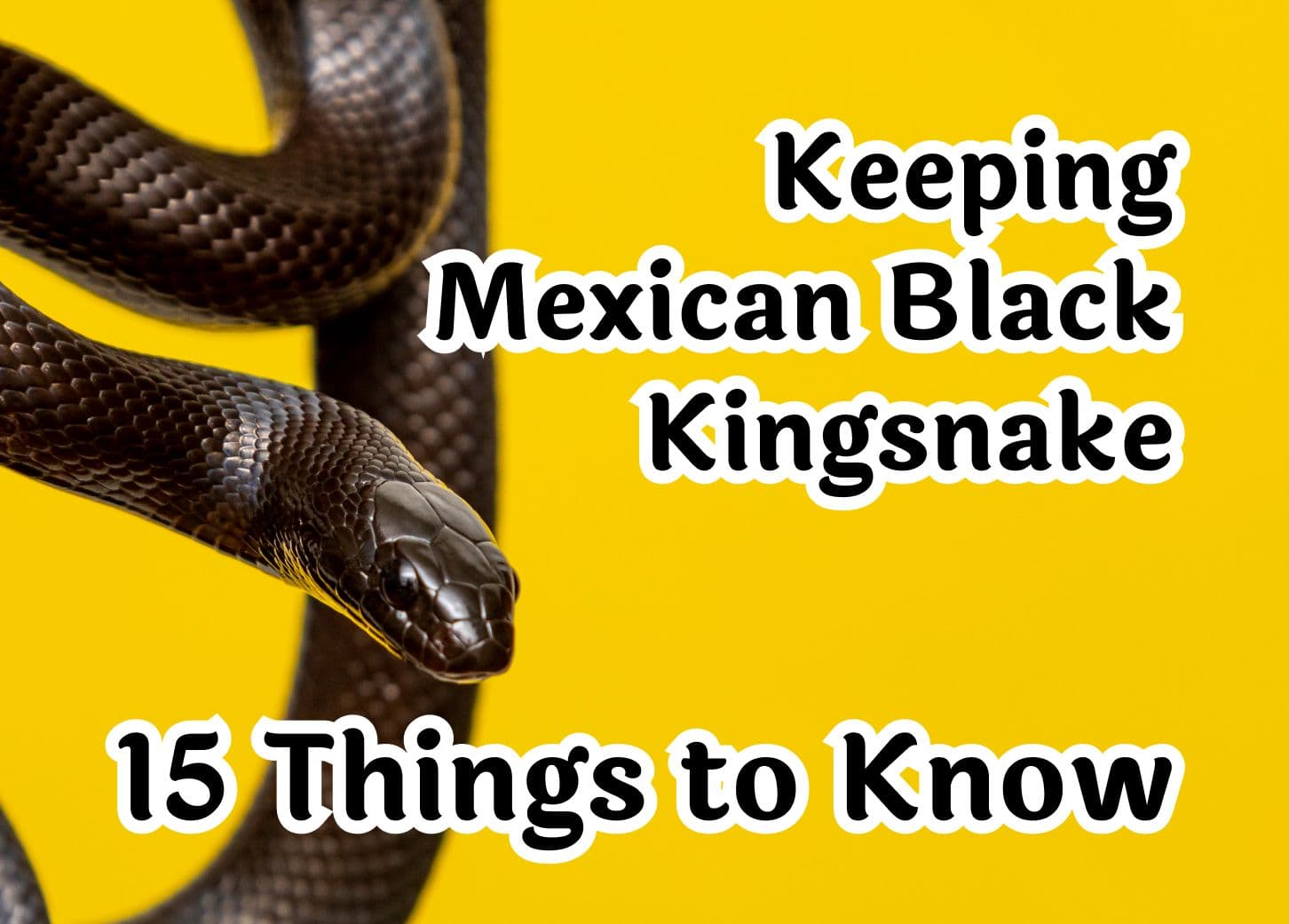15 Essential Tips for Caring for a Mexican Black Kingsnake

If you’re thinking about bringing home a Mexican Black Kingsnake, you’re in for a real treat — but like any pet, they come with their own needs and quirks. I’ve worked with snakes like these before, and let me tell you: they’re stunning, easy-going, and surprisingly low-maintenance once you’ve got the basics down. But there are a few things I wish someone had told me before I got started.
So here’s a no-fluff guide to what it’s really like to care for a Mexican Black Kingsnake — and what you’ll need to keep one happy, healthy, and thriving for years.
Why Mexican Black Kingsnakes Make Great Pets
These guys are beautiful. Their scales have this glossy, almost metallic black (sometimes dark chocolate) sheen that just catches the light in the most mesmerizing way. They’re also non-venomous, super hardy, and usually pretty chill once they’re used to being handled.
They’re not massive — most grow to about 3–4 feet, though some can hit 5 feet in captivity. That’s a good size: large enough to be impressive, but small enough to manage easily. They’re also pretty active and alert, which makes them fun to watch.
Best part? With proper care, they can live 20+ years. So if you’re looking for a long-term reptile companion, this is one to seriously consider.
Setting Up Their Home: What You’ll Need
Tank Size and Setup
A 40-gallon tank is the bare minimum for an adult. I like to follow the general rule: the tank should be at least twice the length of the snake and wide enough for them to stretch out comfortably. Use a secure top (these snakes are escape artists!) and try to get one that opens from the side — they don’t love being approached from above.
Substrate
They come from dry, rocky environments, so stick with dry substrates like aspen shavings or cypress mulch. Paper towels work in a pinch or during shedding when you want to keep things clean and simple.
Temperature & Lighting
Aim for a warm side (with a basking spot around 88–90°F) and a cooler side (75–80°F). Nighttime temps can dip slightly, but not too much. I use a ceramic heat emitter with a thermostat and keep thermometers on both sides of the tank to monitor it all.
Humidity
They like it dry — 40% to 60% humidity is perfect. A humidity gradient in the tank helps them regulate themselves. I spray water lightly when needed, and I always keep a hygrometer on each side to track things.
Humidity Hide
During shedding, they’ll appreciate a moist hide. I made one out of a small plastic container with damp sphagnum moss inside and a hole cut in the lid. Easy and effective.
Water Bowl
This is one of those things people overlook. These snakes love to soak, especially before a shed. Get a bowl big enough for them to coil up in, and clean it daily. Trust me, they will poop in it.
Feeding Time
They eat mice or chicks — frozen/thawed is the way to go. Feeding live prey can lead to injuries or make your snake overly defensive. Young snakes eat weekly, adults every 10–14 days. Just make sure the prey isn’t wider than the thickest part of their body.
Stick to daytime feedings — these guys are active both day and night, but they’ve got no problem eating when the sun’s up.
Handling and Behavior
Mexican Black Kingsnakes are generally docile, especially with regular handling. Start slow, use a snake hook at first if you’re nervous, and always be calm and confident. They can rattle their tail like a rattlesnake when stressed — it’s harmless, but it’s your cue to back off.
They’ve also got a couple of gross defense tricks: musking (a foul-smelling liquid) or even pooping on you. It’s rare with a well-socialized snake, but it happens — especially if you surprise them.
Final Thoughts
Mexican Black Kingsnakes are just plain cool. They’re manageable for beginners but interesting enough for experienced reptile keepers too. If you’re ready for a long-term commitment and willing to get their environment dialed in, they’re one of the most rewarding pet snakes out there.
Just take your time learning their needs, set up their enclosure the right way from the start, and you’ll have a glossy, curious companion for decades.